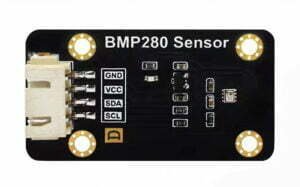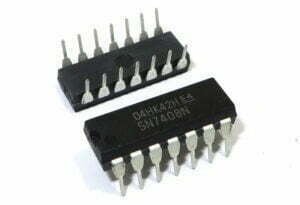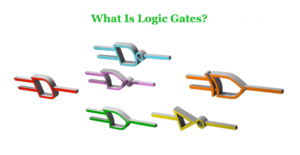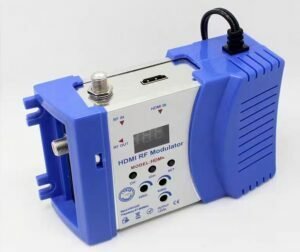IPC-A-610: The Ultimate Guide to Electronic Assembly Acceptance Standards
Everything you need to know about the industry's most widely used electronics assembly acceptability standard. Learn about classes, requirements, certification, and how to implement IPC-A-610 in your organization.
Get Certification InfoWhat is IPC-A-610?
IPC-A-610, "Acceptability of Electronic Assemblies," is the most widely used electronics assembly standard in the world. Often called the "Electronics Assembly Acceptability Bible," it provides visual criteria and acceptance standards for printed circuit board assemblies.
The standard establishes three end-product classes that reflect differences in sophistication, functional performance requirements, and inspection criteria. IPC-A-610 is used by manufacturers, assemblers, and suppliers to ensure quality and reliability of electronic products.
Key Benefits
- Standardized acceptance criteria across the industry
- Reduced disputes between manufacturers and customers
- Improved product quality and reliability
- Visual standards for inspectors and assemblers
- Foundation for continuous improvement
Who Uses IPC-A-610?
- PCB Designers and Engineers
- Quality Assurance Professionals
- Manufacturing and Process Engineers
- PCB Assembly Technicians
- Procurement and Supply Chain Managers
The Three Product Classes
IPC-A-610 establishes three classes of electronic assemblies based on their intended use and reliability requirements.
General Electronic Products
Products where the major requirement is function of the completed assembly. Includes consumer electronics, some computer peripherals, and general-purpose hardware.
- Focus: Basic functionality
- Examples: Toys, calculators, low-cost electronics
- Inspection: Least stringent criteria
Dedicated Service Electronic Products
Products where continued performance and extended life are required, and for which uninterrupted service is desired but not critical.
- Focus: Reliability and extended life
- Examples: Televisions, computers, business machines
- Inspection: Moderate criteria
High-Performance Electronic Products
Products where continued performance or performance-on-demand is critical, and equipment cannot be down. Includes products where failure could be life-threatening.
- Focus: Continuous performance and critical applications
- Examples: Medical devices, aerospace, military equipment
- Inspection: Most stringent criteria
IPC-A-610 Coverage Areas
The standard provides visual criteria for numerous assembly processes and components:
Assembly Processes
- Component Installation
- Soldering Criteria
- PCB and Laminate Conditions
- Discrete Wiring
- Surface Mount Technology
Inspection Areas
- Solder Joint Quality
- Component Orientation
- Cleanliness Requirements
- Mechanical Assembly
- Marking and Labeling
IPC-A-610 Certification
Why Get Certified?
IPC-A-610 certification validates your knowledge of electronic assembly acceptability standards, making you more valuable to employers in the electronics manufacturing industry. Certified professionals can:
- Perform consistent, standardized inspections
- Reduce manufacturing defects and rework
- Improve communication between departments
- Support quality management systems
- Enhance career opportunities and credibility
Certification Types
- Certified IPC Specialist (CIS): For operators, inspectors, and others who need application knowledge
- Certified IPC Trainer (CIT): For those who will train and certify others
- Certified Standards Expert (CSE): Advanced certification for standards implementation
Note: Certification is valid for 2 years, after which recertification is required.
Training Modules
Standard certification training typically covers:
- General Requirements (Module 1)
- Soldered Connections (Module 2)
- Surface Mount Assemblies (Module 3)
- Through-Hole Technology (Module 4)
- Other optional modules based on needs
Training is available through IPC-authorized training centers worldwide.
IPC-A-610 vs. J-STD-001
A common point of confusion is the difference between IPC-A-610 and J-STD-001. While related, they serve different purposes in the electronics manufacturing process.
| Feature | IPC-A-610 | J-STD-001 |
|---|---|---|
| Primary Focus | Acceptability criteria for finished assemblies | Requirements for soldering processes and materials |
| Purpose | How to judge the quality of a solder joint/assembly | How to make a good solder joint |
| Analogy | The food critic's review | The chef's recipe |
| Target Audience | Inspectors, quality assurance personnel | Assembly operators, process engineers |
| Content Type | Visual criteria and acceptance standards | Process requirements and material specifications |
Many professionals obtain certification in both standards to have a comprehensive understanding of electronics manufacturing quality.
Frequently Asked Questions
IPC-A-610 categorizes findings into three conditions: Acceptable (meets requirements), Process Indicator (doesn't affect form, fit or function but indicates process variation), and Defect (fails to meet requirements and affects form, fit or function). Defects typically require rework or repair.
The standard is typically revised every 3-5 years to reflect new technologies, materials, and industry practices. The current revision is IPC-A-610H, released in 2020.
While you can reference the standard without certification, certified personnel have demonstrated thorough understanding through training and examination. Certification is often required for inspectors and quality personnel in certified facilities.
The standard can be purchased directly from IPC (www.ipc.org) or through authorized distributors. Digital and printed versions are available.
This designation indicates that a company has certified trainers on staff and follows IPC standards in their manufacturing processes. It demonstrates commitment to quality and standardized processes.
Additional Resources
Related Standards
- J-STD-001 - Requirements for Soldered Electrical and Electronic Assemblies
- IPC-A-600 - Acceptability of Printed Boards
- IPC-7711/7721 - Rework, Modification and Repair of Electronic Assemblies
- IPC-J-STD-004 - Requirements for Soldering Fluxes
- IPC-CC-830 - Qualification and Performance of Electrical Insulating Compound
Training Resources
- IPC-A-610 Certification Training Programs
- Online IPC Standards Training
- Workmanship Standards Posters and Visual Aids
- IPC Training Centers Worldwide
- Corporate Training Programs






